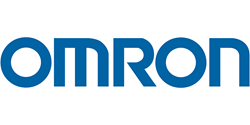Almost all electronic devices require a power converter solution to convert input and output voltages. Featuring highly integrated circuits, new-generation power converters can significantly shorten the product design phase. This article will introduce the differences and benefits of DC-DC modules and independent designs.
Simplifying designs and lowering costs with high efficiency DC-DC modules
When designing an electronic device, the first thing that comes to mind is: designing a power converter or purchasing a ready-to-use module. For DC-DC modules, the size, wattage, insulation, safety, EMC requirements, electrical performance, inventory and time to market often make it hard for designers to make a decision. With the emergence of increasing low-cost power modules, however, decisions will not be so hard to make. When there are many highly-integrated power modules on the market to provide better power conversion functions, they can help electronic device manufacturers to lower their cost.
When high wattage is required, say 600W, manufacturers will usually buy ready-to-use power modules. This is because it is uneconomical to add a large power module on a PCB. However, for low wattage applications, such as 1W, many manufacturers will choose simple isolation converters that can also isolate the power supply for the data interface or generate a low wattage “spot” voltage for the analog circuit (e.g. -5V) of the operational amplifier rail. These converters, including surface mounting or through-hold modules, can be purchased from credible sources at about US$2 per unit. However, many users believe that they can design and realize a converter at a lower total cost with the basic theory and device application notes.
In fact, it is not as simple as comparing the cost of purchasing a module to that of the BOM for an independent design, because there are more hidden costs to be considered. For example, if we want to build a 1W isolation converter with ten components, the direct cost will include the placement and test of these ten components. In the case of a module, however, we only need to handle the cost of one component. Moreover, we may need to purchase ten components from five manufacturers (including specialized magnetic materials). By purchasing a module, we only need to face one supplier. Then, these ten components may include eight different types of components that require different ways of storage, handling, inspection, stocking, and picking. When using only one module, things will be much less complicated.
Furthermore, there are indirect costs, such as the cost of the increased PCB size. When using an independently designed module, it will be difficult to minimize the PCB size. With embedded surface mounting magnetic modules, we can minimize the PCB. As ready-to-use modules are professionally designed, apart from saving expenses on product certification, we can save costs on module PCB design, engineering time, and design support. If safety certification is required, there will also be continuous certification and inspection fees. When buying components from different suppliers, we will need to spend labor and time on supervision, quality assurance, and control. By using ready-to-use modules, these troubles will never exist.
If we also wish to design and build transformers and other magnetic parts, we will need to consider the above procedures all over again. In addition, we will need to prepare different types and gauges of wires, insulation materials, hardware, and magnet cores. For example, if a transformer consists of more than six coils each with a wire gauge below 0.07mm and a magnet core at 4mm in diameter, we will need special technology and equipment. We can also build the magnetic parts, but the cost will be as expensive as a DC-DC module.
All these costs and related indirect costs and time delays can be saved by purchasing one certified reliable module. More importantly, we can save the “opportunity cost” for the organization to focus on the core business and other more valuable items in order to launch and sell a product faster and earlier.
There are the latest products at a lower cost on the market with performance that is significantly superior to the previous models. For example, NXE series from Murata Power Solutions contains the extra patent-pending embedded magnetic materials that can provide performance better than any typical independent parts or rival products at a lower cost. The NXE series is built with Murata’s patented iLGA packaging compatible with the 1W industrial standard packaging leads for current DC-DC module users to upgrade their products and become more competitive.
Measuring only 12.7 x 10.4 x 4.8 mm these ultra-compact converters have a profile that is more than 30% lower than the 7 mm height industry norm, making them suitable for use in even the smallest space constrained designs. Also, unlike other isolated surface mount DC/DC converters available in the market, the NXE series has the benefit of being manufactured using automated processes that greatly improve overall product reliability and delivering consistent performance characteristics. With an industry standard pin compatible footprint, the series is ideal for a replacement product in existing designs as well as for new compact applications.
Manufacturers used to hesitate about the dilemma: “To build or to buy” DC-DC converters for a good number of reasons. When the new generation low-cost module can fulfill the demand for low wattage application, why not find out more about Murata’s NXE series before making the decision: “to build or to buy” DC-DC converters?


